Mexico has seen a huge demand for finished vehicle logistics, but the country needs to balance this against its capacity.
Mexico has been a hotspot for the automotive industry in recent years, with OEMs and logistics firms alike locating facilities in the country due to its proximity to the US and Canada, its rail networks, its improving port infrastructure and its growing EV and battery supply chain.
Mexico’s vehicle production has returned to levels last seen in 2019, and the country exported just over 3.3m light vehicles last year, a 15.2% increase compared to 2022, according to the National Institute of Statistics and Geography (INEGI).
With this influx of demand and rapid growth, and additional pressure falling on Mexico’s network to support labour shortages in Canadian rail (and potentially US port strikes), FVL providers in Mexico are having to find the balance between capacity and demand.
Balancing capacity at breaking point
Both the domestic and export market for Mexico is growing, and major carmakers including BMW, Volkswagen de México and Tesla have set up shop in the country, with logistics firms ramping up investment and capacity keep up with the growing market.
BMW Group has taken its ‘local for local’ approach to manufacturing and supply chain to Mexico and started construction this year on an 80,000 sq.m battery manufacturing facility next to its assembly plant in San Luis Potosi, with plans to begin making its Neue Klasse electric sports vehicles there from 2027. Volkswagen de México has been looking for logistics partners to establish a common less-than-truckload (LTL) network in Mexico and the US to strengthen the North American supply chain. And while plans may have stalled recently, Tesla said in 2023 that it has plans to build a new gigafactory in Mexico near Monterrey in Nuevo Leon. Although Tesla’s progress on these plans have faltered in the midst of the US presidential election campaigns (and presidential candidate Donald Trump’s pledge to impose higher tariffs on Mexican-made vehicles), Mexican government officials have stated that the OEM has received $135m in incentives to build the factory.
“We feel that the penetration of new brands, mainly Asian and Chinese OEMs, have really changed the landscape of the industry,” - José Luis Martínez, Transportes Marva
GM, Nissan and VW continue to export around 80% of their vehicles out of the country, and Mexico has also seen a significant increase in vehicle imports, driven by China’s carmakers targeting the market. Sales of Chinese brands in Mexico have increased by 300% in the last couple of years, putting even more pressure on the FVL network.
Alongside this OEM investment in the Mexican market, logistics firms have made a base for themselves in the country. Earlier this year, Schneider National relocated to a new office in Mexico City to more easily support cross-border freight moves for customers between the US and Mexico. Other logistics firms including Jack Cooper, which has been operating in the country for 25 years, and Grupo ATC’s vehicle logistics division TLE Automotive, have reported continuous and rapid growth for services in Mexican FVL market. In August, TLE doubled its transporter fleet and is one of Mexico’s biggest haulaway firms, and Jack Cooper opened five new locations in Mexico last year and added 12 new customers.
Automotive Logistics and Supply Chain Mexico will be back for its 10th edition in the hotel Marquis Reforma, Mexico City for its tenth year, from 12-14 November 2024.
The conference will reunite over 550 leading vehicle and parts manufacturers, logistics providers, supply chain technology specialists, and officials for two and a half days of exclusive networking opportunities, interactive learning and cutting-edge content.
Mexico market’s reliance on rail
“We have seen a steady and increasing volume regarding sales in Mexico, as well as exports mainly to the US,” says José Luis Martínez, senior executive sales manager at FVL firm Transportes Marva, a company which has been operating in Mexico since 1976 and since then has added several automotive companies in Mexico, either for delivery through the Mexican ports or across the border with the US.
Martínez says that in FVL, there is a large presence in rail through the border and via short sea shipping. “We feel that the penetration of new brands, mainly Asian and Chinese OEMs, have totally changed the industry,” he says. “We feel we’re at a breaking point right now.”
For the second half of 2024, Marva has forecast for even more volume, although in the short-term, Martínez isn’t concerned about finding the capacity due to the availability on rail. “The market is growing, but we have more capacity in rail and in car hauliers in general,” he says.
Canadian Pacific Kansas City (CPKC) railway has also been investing in its infrastructure in Mexico. The company, which provides cross-border transport to and from Mexico, is constructing a new international rail bridge spanning the Rio Grande River from Laredo, Texas, to Nuevo Laredo, Tamaulipas, Mexico. This new construction project, scheduled for completion prior to year-end 2024, will double rail capacity across the Laredo-Nuevo Laredo border crossing. The new single-track rail bridge, built alongside the existing rail bridge, will allow trains to operate in both directions simultaneously, significantly increasing capacity and efficiency across the border. The second span allow continuous train traffic to run either north or south and will increase the capacity to nearly 70 trains per day.
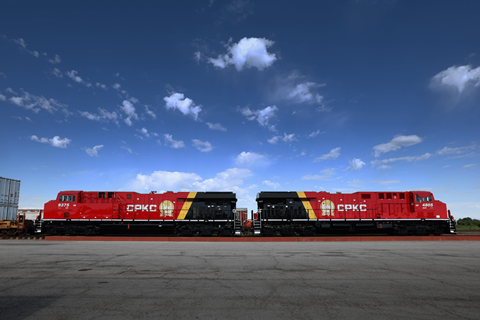
“We are witnessing a pivot in global supply chains from Asia to Mexico with the movement of companies to Mexico and the development of supply chain integration in North America,” a CPKC spokesperson says. “The pandemic forced us to de-risk supply chains and the ongoing nearshoring reflects that de-risking. Mexico is now the largest trading partner with the US with record amounts of foreign direct investment (FDI). The CPKC network has the track capacity, intermodal and transload network, along with key partnerships to support continued FDI.”
The spokesperson added: “CPKC has built out an automotive ecosystem in the early days of this journey to deliver competition, service, and capacity certainty that never existed in the Mexico network. This ecosystem leverages the plants served in Mexico, Ontario and strategic US markets and connects those plants to key destination markets in the US and Canada building out an industry leading closed-loop network and single line network.”
Port investment for Mexican exports
Martínez’s colleague and commercial director at Transportes Marva, Jan von Feilitzen, says the domestic market is showing a promising increase, while the exports to US and Canada are maintaining their share of cars produced in Mexico.
“There is more production that is coming to Mexico in light of what the OEMs are doing in the US, they are converting the lines from conventional ICE engines to EV production lines, so there is more production capacity coming to Mexico, including EV production, and that in itself continues to put a lot of pressure on the supplier,” he says. “In the export market, rail is the primary mode of transportation, but what we are seeing and what we are experiencing today is that you have a lot of short sea services running throughout the Mexican port system that requires outhaul equipment to run from a particular OEM plant.”
Von Feilitzen thinks that with port investment in recent years has helped balance this supply and demand before it tipped over into a critical capacity shortage. “Perhaps five years ago, Veracruz was the largest automotive port in Mexico, but if we look at the picture today, you notice that on the west coast of Mexico there are two ports that have grown significantly,” he says.
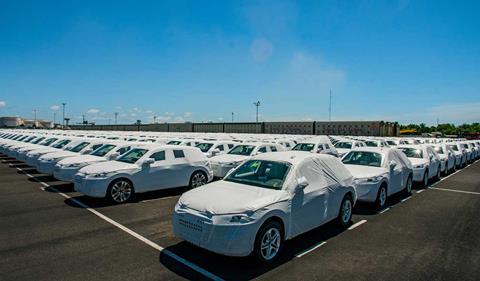
This port investment has allowed ports like the Lázaro Cárdenas port (the largest Mexican seaport) and Mazatlán port to ease some of the pressure. As well, on the Gulf coast, the ports of Altamira and Tuxpan, in addition to Veracruz, have become critical and important ports in ensuring that there is enough port capacity to manage the increase in export volumes.
Mexico’s security problem
One issue that has continually affected Mexico’s FVL market is security, with the country’s government having had to deploy marine troops to take operational charge of ports and terminals due to thefts and drug trafficking. At borders and ports, strict security checks are subjected on cargo which has caused an increase in waiting and delivery times, and FVL transport on road and rail is left open to the risk of theft. To help combat this, military-backed convoys are used on routes that are subject to attack often.
Logistics firms like TLEA have also had to undertake their own security measures, using technology and training programmes to reduce risk.
“There is a limit on what we can do, but we take the action we can,” - José Luis Martínez, Transportes Marva
Transportes Marva’s Martínez says security remains “a big challenge” for Mexico. “At the beginning, the authorities told us it was connected to there being no availability of vehicles in the Mexican market,” he says, “but now we just feel they’ve just found a way to intercept our car hauliers and steal the vehicles.”
He says the group is working closely with the authorities and with rival companies to detect where the most risk lies on certain routes. In fact, banding together with other FVL firms has proved beneficial to all.
“We have worked together with our fellow trucking colleagues in order to transit through certain routes at certain times, in convoys of five to ten trucks transiting through these dangerous areas at the same time, and most of the time guarded by the Guardia Nacional, the National Security Authorities for the highways,” he says. “There is a lot of communication with the authorities, reporting every event very quickly and then reacting promptly as well. Of course, there is a limit on what we can do, but we take the action we can.”

FVL provider Vascor has also come up against this issue. Nick Thompson, vice-president of North American finished vehicle logistics at Vascor says the group has come up with several solutions to help safeguard facilities, vehicles and personnel.
“We have a lot of focus on the safety and security of our people and products, so we have created a number of initiatives to make sure our facilities are safe and secure, including adding extra barriers and guards, partnerships with local police departments, and camera monitoring,” he says. “In Mexico it’s a big challenge that we’re working to help our customers with, although it hasn’t been as big of a concern this year as it has been in the last couple of years. Long-term, that’s an area that we’re growing in our business to be able to support the growth that’s happening in Mexico. We work with the likes of Stellantis and Toyota down in Mexico and do a lot of operations for them, but we also work with some of the foreign manufacturers in Mexico out of the ports to accessorise and handle vehicles and get them ready for trucking out.”
How electrification is changing Mexico’s FVL sector
Despite its capacity and security challenges, Mexico’s FVL market for EVs is flourishing as EV production in the country continues to rise.
“In Mexico we are seeing a growth in EVs, it’s a recent change from last year where we didn’t have much production of EVs in the country,” says Transportes Marva’s Martínez. “I think last year there was only one plant producing EVs, whereas now we are producing many, which is a big step forward because I think it took a while for OEMs to make this decision.”
Watch: Red Sofa Interview: How Volkswagen is readying for electrification in México
Currently Mexico Produces four EV models which include Ford’s Mustang Mach-E, in Cuautitlán Izcalli, Chevrolet Blazer, Chevrolet Equinox, and Honda Prologue in Ramos Arizpe. “EV production in Mexico grew from 0 to 4.5% of total vehicle production in the last four years” says Manuel Lastiri, commercial manager at Transportes MARVA. “Although it is still a small percentage, EV production is intended to keep on growing in the next five years.”
While the growth in the EV market is promising, it does present a new roadblock to the FVL sector. OEMs are in the process of lightweighting materials, but EVs are heavier than ICE vehicles with batteries weighing in around 300-500kg, putting strain on road capacity.
Preparing for this transition, Transportes MARVA has engineered specialised reinforced trailer equipment to ensure proper EV vehicle transportation powered by 100% electric Class 8 Trucks. Lastiri says: “MARVA has played a pivotal role in developing strategic charging infrastructure and propelling electromobility to finished vehicle logistics.”
“This obviously changes the way we transport, with the weight of the EVs changing the loading factor,” says Martínez. “And this of course impacts the industry because we need more trucks to face this EV growth.”
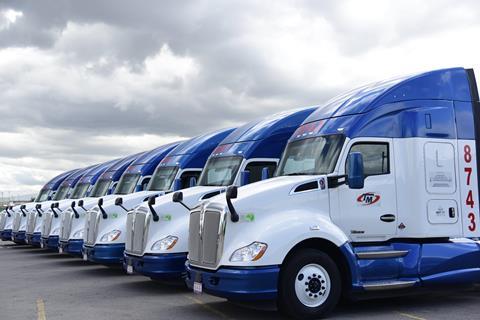
This could cause problems in the next few years, as Mexico’s trucking fleets are ageing out and need to be replaced and upgraded. Mexico’s trucking fleets, particularly in Mexico City, tend to be small. According to UN Habitat, in a sample of private fleets that have less than 100 vehicles, two-thirds of these companies have three trucks or less. This makes the country’s aging trucking fleet problem more difficult, as the average age of trucks in Mexico’s fleets ranges from six or seven years old for major fleets between 100-500 trucks, but this figure skyrockets to fifteen years and above for smaller fleets.
Mexico’s FVL fleets will need to upgrade in the coming years, but in the more immediate short-term, Transportes Marva’s Jan von Feilitzen is optimistic about the market.
“We are very positive on what we see happening in the automotive market in Mexico, with an increase in production and the domestic market showing a very positive trend,” he says.
Similarly, TLEA is positive about the market, and the high demand has led the company to increase its fleet and add services to strengthen the network further.
Marva’s Martínez adds: “It’s going be balanced, that’s what I feel is happening. The market is growing, but we are finding capacity. It will be different now compared to the last few years, with a good balance.”
The original article first appeard in Automotive Logistics’ Autumn issue this month. To read more exclusive interviews and coverage on the current and future landscape of Automotive Logistics and FVL, order a copy of the magazine or read the digital version by clicking on the link below!
Get your magazine copy here!





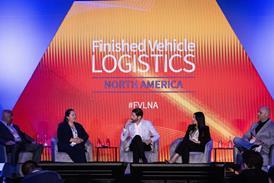
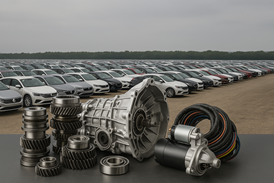

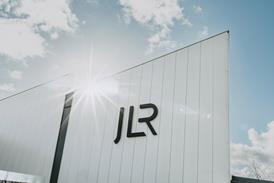










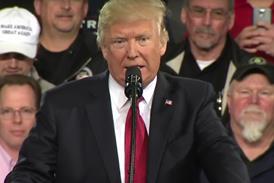






![Global[1]](https://d3n5uof8vony13.cloudfront.net/Pictures/web/a/d/s/global1_726550.svgz)

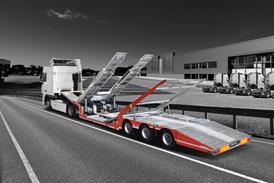



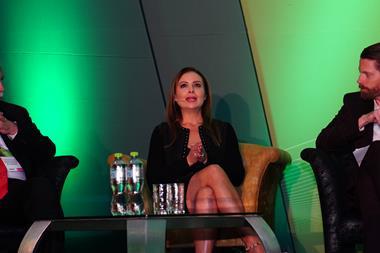
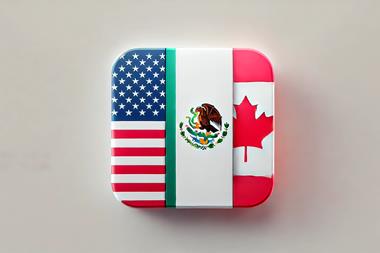
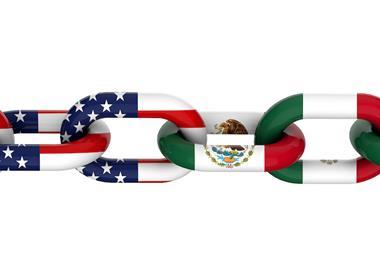

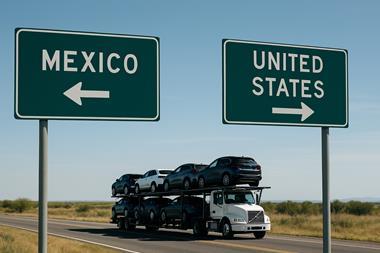
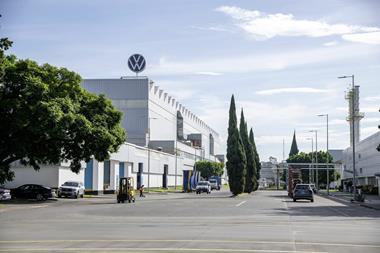



No comments yet